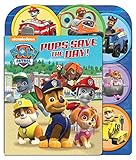Seattle's 'Food Forest' Aspires To Provide Free Produce For All
Language
Reading Level
Listen to Article
Imagine walking to your local park on a warm summer afternoon and settling down under a tree with a good book and a freshly picked juicy apple or peach - That is exactly what the brilliant minds behind Seattle's Beacon Food Forest Project are hoping to accomplish for all its residents, in the not too distant future.
Located just 2.5 miles from downtown Seattle, close to the city's popular Jefferson Park, the urban food project that broke ground in February 2012 is being developed on seven acres of land donated by the city's Utilities Commission. Using a $100,000 USD grant from the US government the hundreds of volunteers or Friends of the Beacon Food Forest, have since been hard at work developing the first two acres of the country's inaugural urban food forest. So far, the park which will be open to the public later this summer is home to 35 trees, which are expected to start yielding produce by next year. The volunteers have also completed a large amount of landscaping and irrigation work.
Besides succulent fruits like strawberries, plums and apples, residents will also be able to pick vegetables, herbs and even tree nuts. When completely developed the park could be home to as many as 200 types of edible and useful plants. In addition, it will also feature 50 individual garden plots and a dedicated area for free and paid workshops on topics ranging from food preservation to plant identification and even, basket weaving. There will also be special picnic areas complete with barbeque pits and recreational areas for kids to frolic in, after they have had a freshly picked piece of fruit of course!
And, while the organizers are hoping that most people will be 'ethical' and just pluck a single piece of fruit to enjoy whilst at the park, they realize that there may be some that just cannot resist picking up more - For those, they have set aside a special 'thieves garden' which apparently will contain lower-grade stuff - What that exactly means is not clear!
While dubbed forest, according to Glen Herlihy, the local resident that spearheaded this brilliant idea, it will be nice and neat, albeit a little denser than a normal park. Also, in order to keep it as maintenance free as possible, the gardeners plan to adopt a permaculture design - meaning that it will be similar to wild food landscapes in that they will include plants that provide natural pest management, help alter the soil and add much needed nitrogen and mulch, as well as, keep weeds out.
Besides bringing the community together, Glen also hopes that food foraging of this nature will help bring people closer to the origin of food and encourage them to become more active in preserving the environment. We sure hope that other cities in the US follow Seattle's lead and create these kinds of urban foraging opportunities for their residents too.
Resources: fastcoexist.com, crosscut.com
Cite Article
Geography
Learn Keywords in this Article
112 Comments
- Anynomuosover 10 yearsGreat!
- Emmaover 10 yearsThis is nice
- Kateover 10 yearsThis is beautiful. I do wish more would do this. We have community gardens in my area, but nothing quite like this. Thanks for using your brilliance in such great way!
- den oover 10 yearsgenueis
- bethesda3almost 11 yearsthat is so what i would do for the poor
- ikyra_mariealmost 11 yearsThat is AWEsome!
- i cant tell u malmost 11 yearsawesome
- livethelife2almost 11 yearsI am so hungry now
- mr.Greedyabout 11 yearsits mine mine mine!!!!!!!!!
- elmoabout 11 yearsthis could really change we could eat healthier




